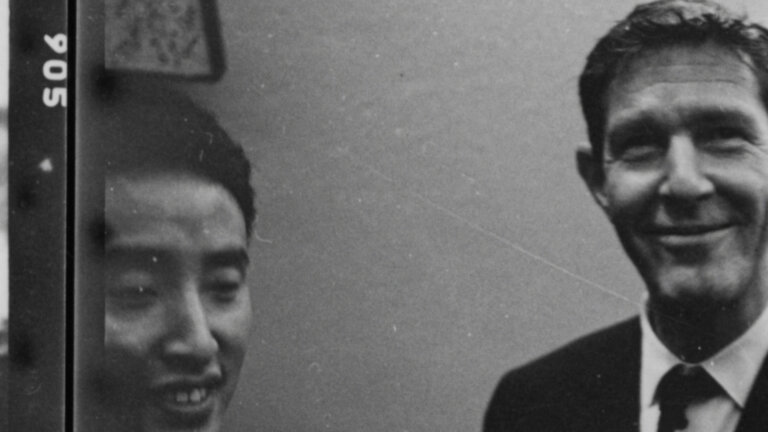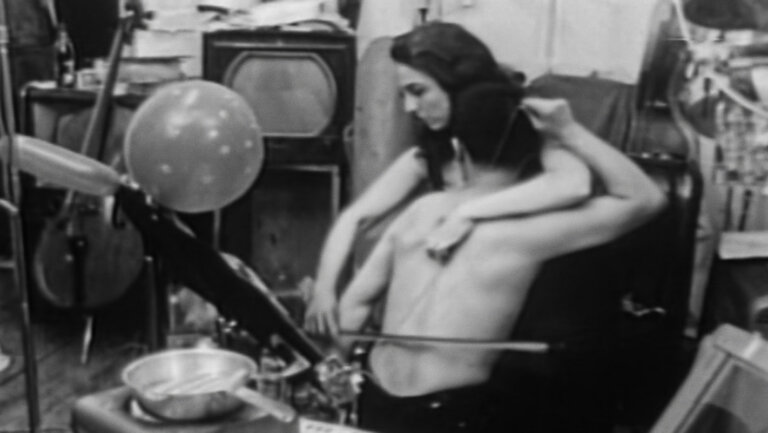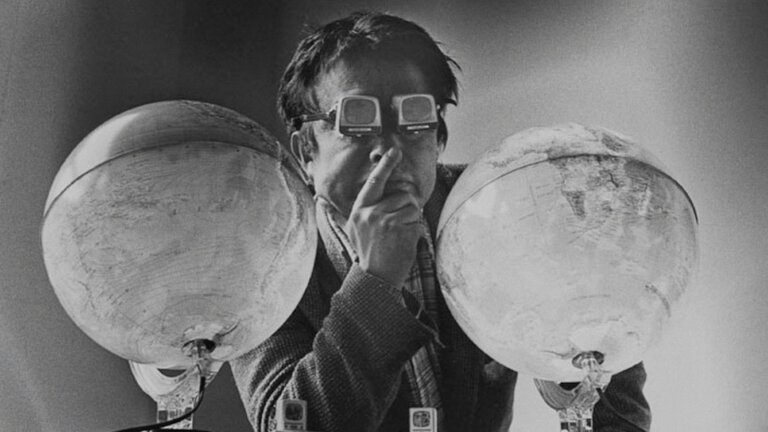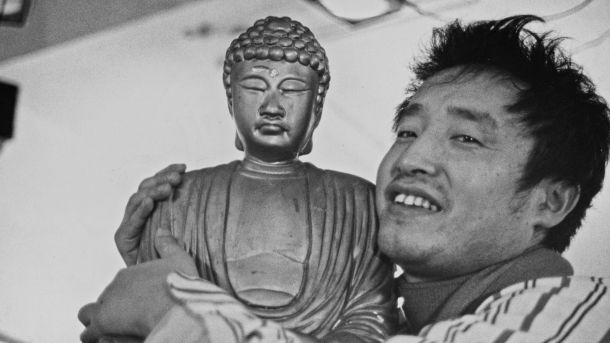As the “father of video art” and one of the most influential artists of Korean descent, Nam June Paik was a pillar of American avant-garde movement in the 20th century. Paik’s prescient claims that in the future “everybody will have his own TV channel” are more true than ever today with the rise of social media. He also believed in making his art accessible and championed that effort through his work on public television, serving as artist-in-residence for WNET/Thirteen’s TV Lab. This timeline explores Paik’s life, from his childhood in Japan-occupied Korea and formative education in Germany, to his ascent in the New York art scene and the major milestones in his career.
Nam June Paik was born on July 20, 1932 in Seoul, Korea, which was then under Japanese occupation. He was trained as a classical pianist at a young age.
Paik and his family ended up in Japan when they fled Korea during the Korean War in 1950. Paik attended and graduated from the University of Tokyo in 1956 with a B.A. in aesthetics. He wrote his thesis on the composer Arnold Schoenberg.

MEETING JOHN CAGE
Paik went to West Germany in 1957 to pursue music and study with composers Thrasybulus Georgiades and Wolfgang Fortner. While in Germany, Paik also met avant-garde musician John Cage, whose experimental performances inspired Paik so much that he began to shift his focus from classical music to multimedia art.
In the early 1960s, Paik joined the recently founded Fluxus, an international and interdisciplinary community of artists, composers, designers and poets known for prioritizing the artistic process over the finished product and their experimental contributions to different artistic disciplines. Joseph Beuys, George Maciunas, Yoko Ono, and more were among its members.
DEBUT EXHIBITION
Paik's debut exhibition “Exposition of Music/Electronic Television” was held in Wuppertal, West Germany in 1963. He set up multiple televisions, distorted them, made them participatory, and put them in the gallery setting for the first time.
Paik briefly returned to Japan this year and brought back with him a Sony Port-a-Pak, the first commercially available portable video recorder, continuing his work in video art.

NEW YORK CITY
Paik moved to New York City in 1964 and began several collaborations with classical cellist Charlotte Moorman, combining his video art with her music.
In 1967, Paik and Moorman were arrested for public indecency due to Moorman being topless while performing in Paik's "Opera Sextronique."
In 1969, they created "TV Bra for Living Sculpture," in which Moorman wore two functioning television screens over her breasts while playing the cello.
In 1971, Paik and Moorman made "TV Cello," a cello created from three stacked television sets and cello strings, that Moorman "played" as images of her and other cellists playing appeared on the screens.

"TV BUDDHA"
Paik created the first version of "TV Buddha" in 1974, a video installation depicting a Buddha statue viewing its own live image on a television.
In 1977, Paik married fellow artist Shigeko Kubota, who he met in New York. Kubota, who was born in Japan, was also a part of Fluxus and worked with video art and performance. They remained together until Paik's death.

"GOOD MORNING, MR. ORWELL"
On New Year's Day in 1984, Paik produced "Good Morning, Mr. Orwell," a live, international satellite broadcast between WNET/Thirteen in New York and Paris, and shown all over the world including in South Korea. The program included the participation of artists Laurie Anderson, Peter Gabriel, Allen Ginsberg, and more.
Paik's intention with "Good Morning, Mr. Orwell" was to show that George Orwell's view of the future of society and technology in his book "1984" didn't have to be dystopian, but could be positive.
Paik returned to South Korea for the first time in about 34 years after being exiled, where he played an integral role in Korea's art scene, and helped introduce it to the rest of the world.
Paik passed away in 2006 in Miami, Florida due to complications from a stroke he suffered in 1996, which left his body paralyzed on his left side.















